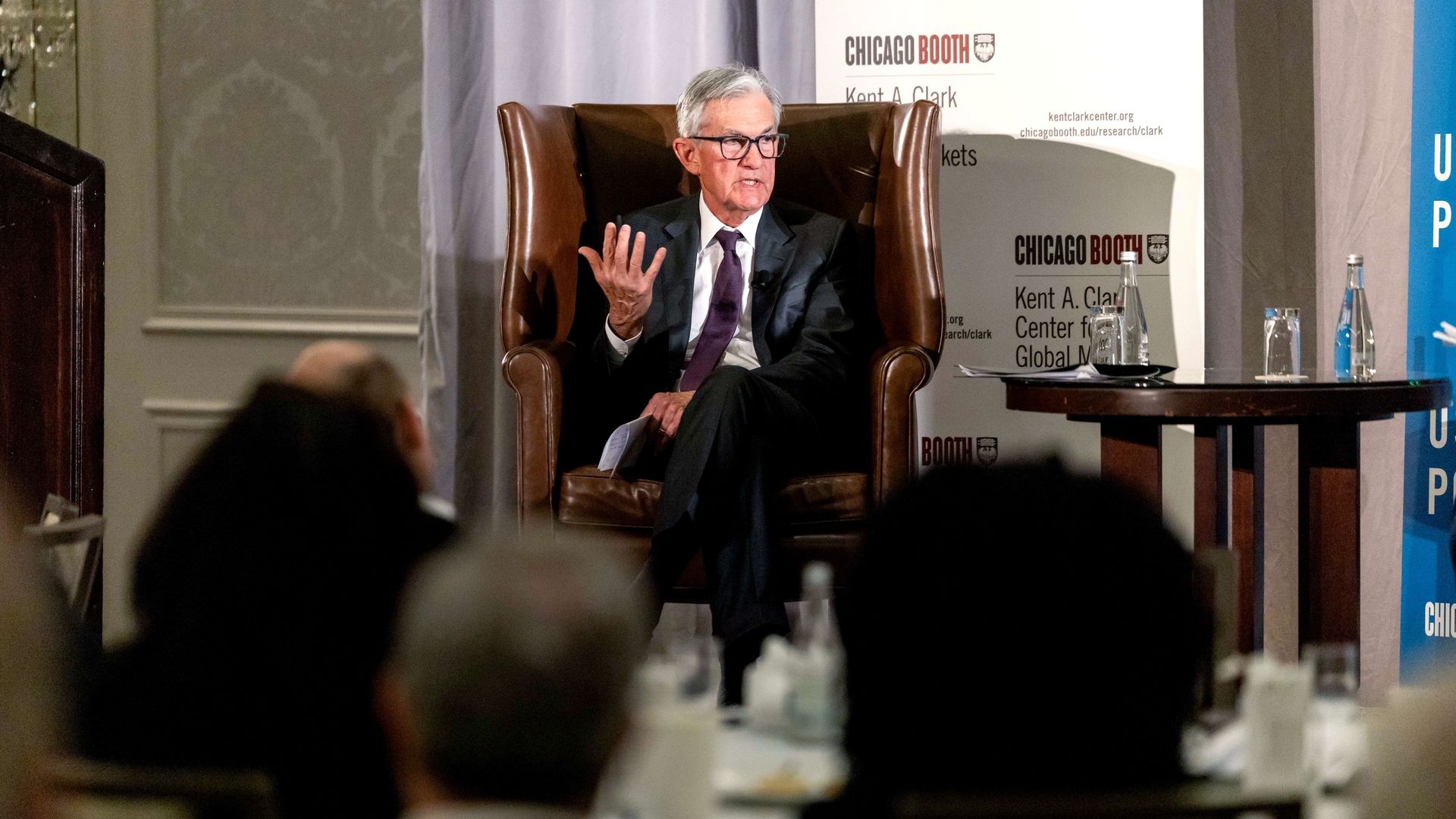 Fed chair Jerome Powell speaks during an event at the University Of Chicago Booth School Of Business last month. Photo: Yuki Iwamura/Bloomberg via Getty Images
Fed chair Jerome Powell speaks during an event at the University Of Chicago Booth School Of Business last month. Photo: Yuki Iwamura/Bloomberg via Getty Images
Federal Reserve chair Jerome Powell said on Wednesday that President Trump’s tariffs would likely lead to a faster rise in prices and weigh on economic growth.
Why it matters: Trump campaigned on lowering prices for inflation-weary consumers, but Powell is the latest to suggest Trump’s trade war might do the opposite.
- In a speech at the Economic Club of Chicago, Powell said the Fed could face a tough scenario if inflation rises alongside teetering economic growth.
What they’re saying: “Tariffs are highly likely to generate at least a temporary rise in inflation,” Powell said, warning of the possibility that inflationary effects could also linger.
- Powell said how long tariff-related inflation persists depends on a slew of factors, including the time it takes for tariffs to “pass through fully to prices.”
The big picture: Trump’s tariff regime — which has shifted week-to-week — has so far been “significantly larger than anticipated,” Powell said.
- “The same is likely to be true of the economic effects, which will include higher inflation and slower growth,” he added.
Between the lines: Tariffs might result in stagflation-like economic conditions, leaving the Fed in an uncomfortable bind.
- If the economy stagnates alongside rising inflation, it would force the Fed to choose whether to support the economy (likely with lower rates) or tame inflation (likely with higher rates).
“We may find ourselves in the challenging scenario in which our dual-mandate goals are in tension,” said Powell, who was first nominated to the Fed post by Trump in 2017.
- “If that were to occur, we would consider how far the economy is from each goal, and the potentially different time horizons over which those respective gaps would be anticipated to close,” Powell added.
- Congress assigned the Fed two mandates: maximum employment and price stability.
What to watch: The Fed has embraced a “wait-and-see” approach, preferring to wait for clarity on White House policy before adjusting interest rates.
- Market-based odds show a slightly higher chance of three Fed rate cuts this year, according to the CME’s Fed Watch tool.
Go deeper: The trade war’s pandemic parallel


